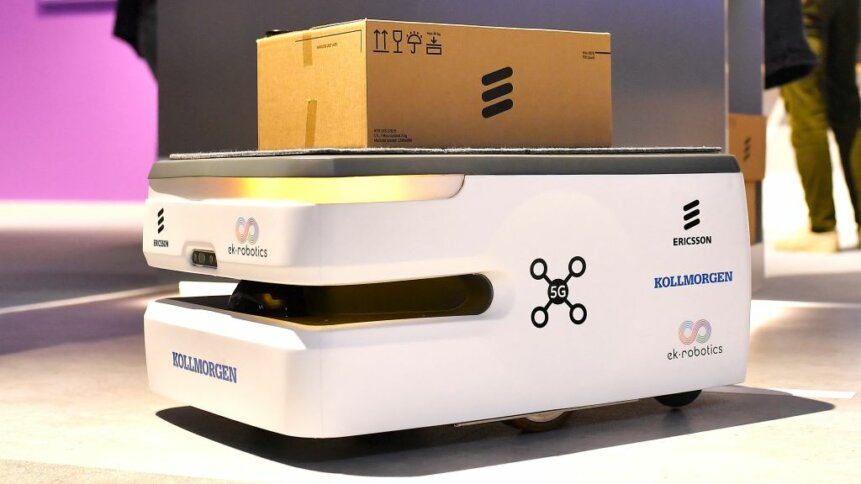Defining 5G in terms of business and enterprise use cases

|
Getting your Trinity Audio player ready...
|
• The business benefits of 5G go beyond standard smartphone speed.
• Private 5G networks in particular advantages for app or use case testing.
• 5G could yet bring significant business benefits to the transport and logistics sector.
With some commentators voicing concerns about whether 5G has lived up to expectations, it’s worth looking at what the fifth generation of cellular network technology is – and what it and isn’t. A good way of getting to the heart of that capability is to focus on what 5G can do for enterprise customers and business users.
5G was badged as being superfast, and this may have added to the confusion. For example, smartphone users may not notice a great deal of difference in device performance, regardless of whether they are connected to 4G or 5G.
However, there are still reasons to celebrate from an infrastructure perspective. As we’ve mentioned on TechHQ, upgrading base stations to the latest 5G technology not only means that equipment is smaller and lighter – there can be significant energy savings too. And the advantages don’t stop there.
“The integration of AI and 5G in modern switchgear marks a significant leap in the electrical infrastructure management,” comments Kiran Raj, practice head of disruptive tech at GlobalData. “Not only does this tech convergence boost operational efficiency, but it also enhances safety by predicting and mitigating electrical failures before they happen.”
Operators in China have shown how miniature cameras inside switch cabinets can be used to detect fire and activate extinguishers. And predictive analytics can be trained using data from power transformers.
Understanding 5G business benefits
Given the link between 5G and telecoms, it’s natural to look to smartphone performance for signs that the next generation of cellular network technology is living up to the hype. But the bigger picture for 5G goes well beyond handsets.
In its recent report, 5G Building a Digital Society, Vodafone explains how 5G can improve daily life more broadly and shares examples that business and enterprise users may not have considered.
For example, Vodafone says that 5G-enabled sensors on rail networks have the potential to improve services by raising track maintenance efficiency by up to 40% and reducing the rate of fault incidence by 20%. 5G-enabled rail could also help to add capacity to the network, lowering overcrowding at peak times.
Coupling trains virtually using 5G would enable them to share braking and acceleration data. A white paper by Thales calculates that train separation distance could be reduced by 43% compared with using current railway signaling methods, based on analysis of the UK South West Main Line (a 230 km route linking central London and the coastal town of Weymouth). In principle, this would allow many more trains to run without having to build additional tracks.
Low-latency private 5G networks are being used to automate vehicles driving between parts warehouses and main manufacturing sites.
Transportation and logistics could be big winners as 5G networks become more widespread. Vehicle telematics systems have long used cellular communications to connect to the cloud and monitor that all’s well through remote analytics.
Vendors can deliver software updates over-the-air rather than having to instruct owners to contact their dealership. And 5G telematics adds to those capabilities.
Vehicles can connect to each other to see around corners and gain greater knowledge about the road ahead. Automotive technology firm Harman, which is owned by Samsung, describes 5G as the missing piece of the puzzle for highly automated vehicles.
The low latency response time (of around 1 millisecond) that’s possible over 5G – a reduction of ten times compared with 4G – means that humans can remotely control cars, trucks, and other vehicles, with reaction times that are similar to having a driver sitting inside, directly behind the wheel.
Industry 4.0 is changing the business landscape right before our eyes, thanks to #5G and the innovations that come from it 🏭💻. Learn how to stay at the forefront of what’s coming. #5GHQ https://t.co/rghLt3TEG2 pic.twitter.com/EIZ8oIq48B
— David Yelvington (@DavidYelvington) December 11, 2023
5G also supports a much higher connection density than 4G, which benefits smart city infrastructure and brings us arguably one of the most appealing configurations for business and enterprise users – private 5G networks.
Private 5G networks give firms data coverage inside and outside facilities while keeping communications secure. The high connection density and low latency capabilities mentioned above suit mobile robots and so-called ‘intralogistics’ – the movement of goods within a warehouse, distribution center, or production facility.
Kollmorgen, a specialist in the fleet control of automated guided vehicles and mobile robots, has demonstrated (in tests with its partner Ericsson) that platforms are as stable on private 5G networks as on Wi-Fi.
Antenna handovers are seamless, and 5G enables localization in dynamic environments without having to use artificial landmarks, according to the team.
Support for time-sensitive networking (TSN) allows fixed Ethernet and 5G networks to operate in harmony with each other. What’s more, TSN means that 5G can support applications normally carried over wired Ethernet, potentially saving on long cable runs at large sites.
Looking at industrial operating environments for 5G, business cases include airports, manufacturing sites, ports, mining facilities, and offshore locations.
How to build a private 5G network
Business and enterprise users interested in deploying their own cellular services have the option of using a private 5G network starter kit. The approach is ideal for testing applications on a pilot scale and gaining experience before making larger investments in the technology.
Private 5G starter kits for business:
- 5G Ready – X4000 Private 5G (XP5G) Solution
- Airspan Private 5G Network in a box
- Athonet starter kit for 5G-SA
- CampusGenius 5G StarterKit
- Flo Networks Private 5G Starter Kit
- Tech Mahindra Private 5G Wireless Network suite on Azure
It’s clear that companies have much to gain from the technology, but other organizations may also wish to take a look at what 5G installations can do for them.
The Liverpool 5G Testbed, which created the largest 5G mmWave mesh network in the UK and second largest in the world, showed how a private 5G network could benefit health and social care services.
Features included a 4k video link to help patients check that they were taking their medicines correctly, which resulted in fewer GP visits and trips to hospital.
According to the study, there was a 50% reduction in people taking the wrong medication or receiving an incorrect dosage. Medication adherence levels were as high as 95% compared with a national average of 55%.
Returning to the topic of saving energy, testing of smart streetlights in Oslo – featuring 5G-enabled sensors – demonstrated a 45% reduction in electricity consumption. In dense urban areas, savings could reach 60% – based on a 12,000 light installation deployed in the City of London, which overhauled 30-year-old lighting stock.
Smart city lighting allows control down to the level of specific streets and buildings and enables the illumination to be dimmed as well as turned on and off.
With timely investment, the rewards of 5G to businesses and society can extend way beyond the smartphone.










